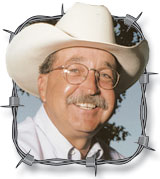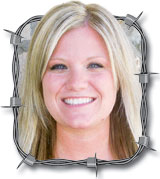“It’s a muley!”
That was a welcome proclamation from my dad every time a hornless calf was captured in the head chute when we were working calves during my youth. Where I was raised, people didn’t refer to the calves as polled, or even hornless. They were ‘muleys’ and it was a welcome announcement because it meant that we didn’t have to perform the messy, invasive and time-consuming operation of dehorning.
In retrospect, I’m convinced that was the main reason dad always chose to use Angus bulls on his cow herd back then. Since Angus was the only major beef breed during that era that was naturally polled, almost all of the calves that were born from that mating would result in ‘muleys.’ Of course we still had lots of calves that had to be dehorned because we would raise several Holstein-cross calves on the bottle every winter, that we would purchase as babies from local sale barns and dairies – and they all were horned.
Today, almost all of the beef breeds are either completely polled or have a significant segment of the breed that is polled, resulting in a very small percentage of calves that require the dehorning procedure. The dairy industry, however, is a completely different story. Or, at least I thought so until last week.
The good people of the Illinois Holstein Association invited me up to entertain the crowd at their annual convention last week. Because a major winter storm was forecast for the same time, I decided to try to beat the storm by going up a day early. As it turned out, I made the right decision, because the entire area was socked in with freezing rain and a significant snowfall shortly after I arrived, but I was denned up safely in the hotel. By noon the next day, I had watched as many sports highlights and old reruns as I could stand and decided to check out some of the convention activities. As luck would have it, the association was sponsoring an auction that afternoon in that very hotel. Heck, I hadn’t attended a dairy auction in 20 years, so I decided to go.
The auction was not your stereotypical cattle auction with the animals paraded in front of the prospective bidders, splashing mud and manure about the front row, but more of a virtual sale that found people in a fancy banquet hall, staring at a wall-sized computer screen that detailed the specifics of both embryos and semen that were stored in liquid nitrogen all over the Midwestern United States. I don’t have any idea what dairy embryos are worth, but it seemed to me that the sale was going well. Then, they started auctioning flushes, embryos and semen from a few lines of polled Holsteins and the prices went up impressively.
I leaned over to the guy sitting next to me and asked, “Do you mean to tell me that Holsteins have a line of polled genetics now?”
“You’re not a dairyman, are you?” He asked, as he stared at my cowboy hat.
“No,” I admitted, “I’m just amazed that I lived long enough to see a ‘muley’ Holstein.”
“You’re not from around here, either, are you?”







